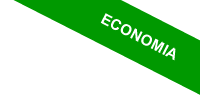Economic Costs
Economic cost is the total amount of resources a business uses to produce a certain quantity of goods or services. It reflects the real cost of production - not just in terms of money, but also opportunity cost.
When we talk about total cost, we’re referring to everything a company spends to produce its output.
Total cost is made up of two key components: fixed costs and variable costs.
- Fixed Costs
These are costs that stay the same, no matter how much (or how little) a business produces. Think of expenses like equipment, rent, or upfront investments. In the short term - when a firm can’t easily change its resources - these costs don’t budge, even if output levels rise or fall. - Variable Costs
These costs change depending on how much is produced. The more you produce, the higher they go. Common examples include raw materials and wages for workers directly involved in production. In the short run, variable costs rise with output and fall when production slows down.
Note. From an accounting perspective, costs can also be classified as direct or indirect. A direct cost can be clearly linked to a specific item or activity, while an indirect cost supports multiple outputs and needs to be allocated across them.
Economists also focus on two important types of cost: marginal cost and average cost.
- Marginal Cost
This is the extra cost of producing one more unit of output. It helps businesses decide whether increasing production is worth it. - Average Cost
This is the total cost divided by the number of units produced. In other words, how much it costs - on average - to produce each item.
Cost vs. Expenditure. These terms are often used interchangeably, but they’re not quite the same. Expenditure is the money paid to buy a good or service. Cost, on the other hand, is what it takes to produce it. And neither should be confused with price, which is what a buyer pays in the market.
